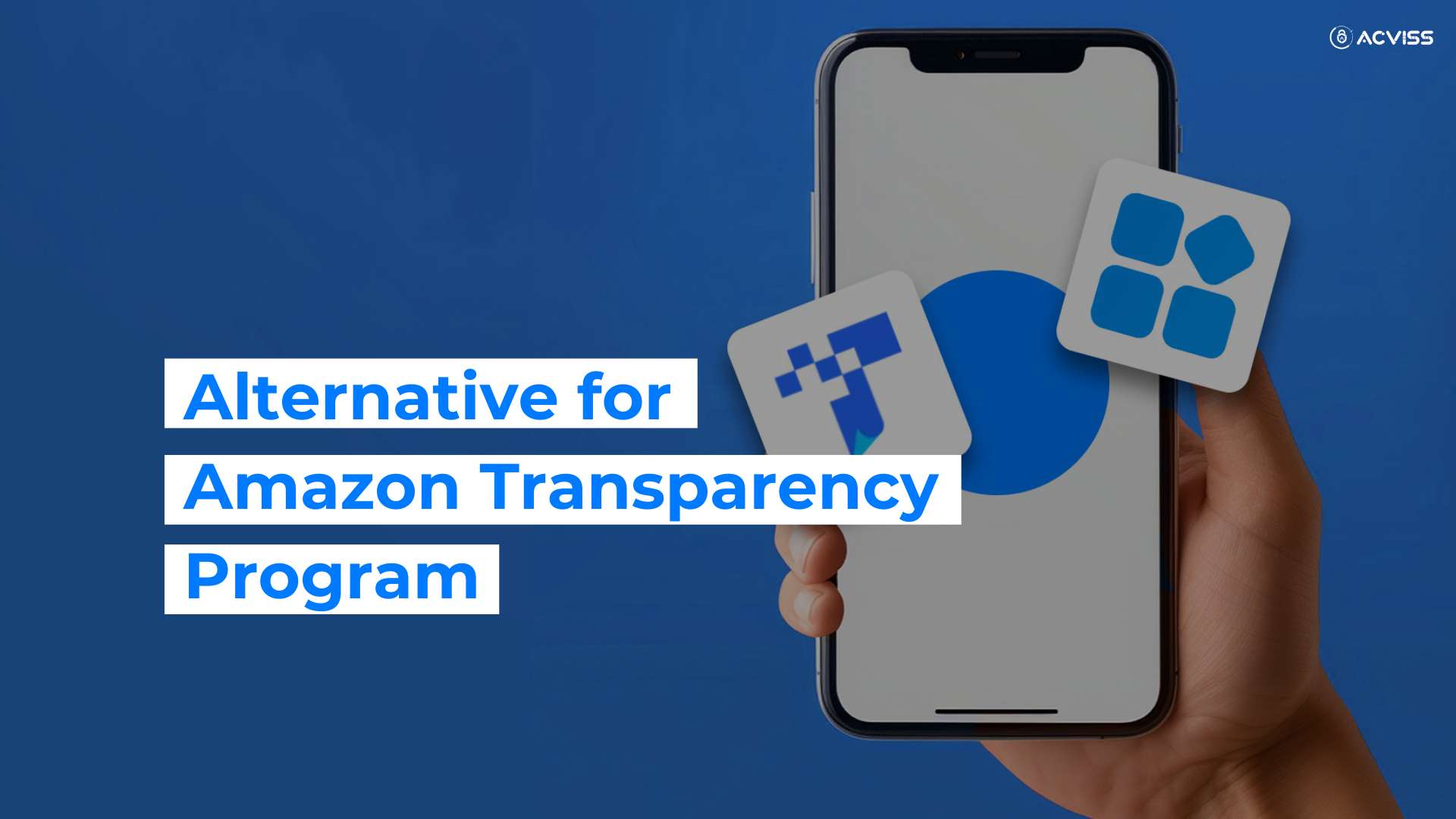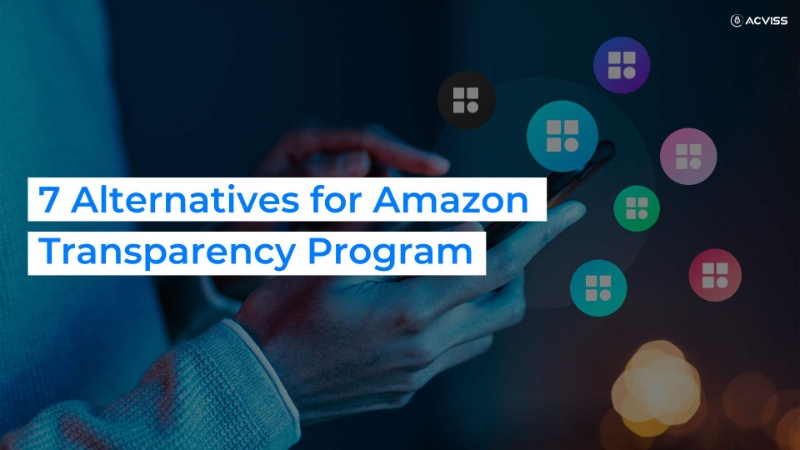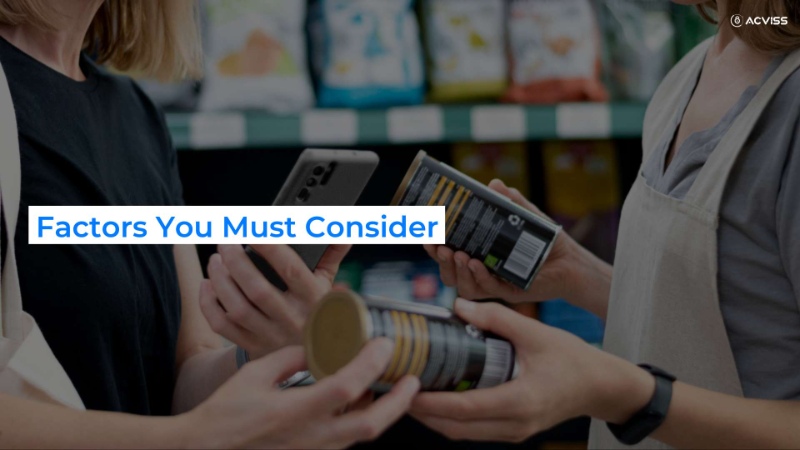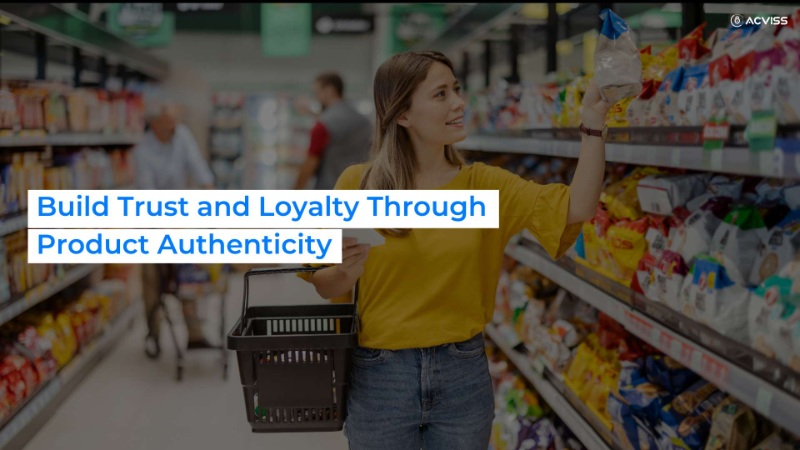Alternatives For Amazon Transparency App To Improve FMCG Product Authenticity & Traceability

Product Authenticity has become a critical concern for consumers, especially when it comes to the complex world of FMCG products. Gone are the days of a blind trust; today, buyers want to know the journey their purchases take - from raw materials to their doorstep. To cater to the customers' needs, brands have also prioritised product traceability and brand protection to increase transparency in their supply chain.
Enter Amazon Transparency, a QR code-based system that allows users to scan products and access information about their origin, journey, and authenticity. While effective in its own right, it's crucial to recognize its limitations and explore alternative solutions that cater to the diverse needs of FMCG brands and consumers.
Limitations of Amazon Transparency
Platform dependency: Transparency is exclusively available within the Amazon ecosystem, limiting its reach to non-Amazon shoppers.
Data control: The data collected through scanned codes resides within Amazon's purview, raising concerns about user and brand data privacy.
Cost barriers: Participating brands incur annual fees and per-unit costs, potentially disproportionately impacting smaller companies.
Poor App Support: The proper functioning of the authentication application decides the program's effectiveness. However, the transparency app didn’t meet the expectations for an ideal authentication app.
Limited functionality: Transparency primarily focuses on authenticity verification, with limited scope for richer data integration and consumer engagement.
Learn more about Amazon's transparency program.
Contents
- What Are Current Technologies You Should Look Forward To In Product Traceability Solutions?
- 1. Blockchain:
- 2. Holograms & Crypto-anchors:
- 3. Physical Track & Trace:
- 4. Artificial Intelligence:
- 5. Secure Packaging & Tamper-Evident Seals:
- 6. Consumer Engagement & Education:
- What Are The Best Alternatives For The Amazon Transparency App?
- Factors You Must Consider Before Adopting A Product Authentication Solution.
- Build Trust and Loyalty Through Product Authenticity
- FAQs
- 1. Is Amazon Transparency available outside of Amazon's platform?
- 2. Who owns the data collected through Amazon Transparency scans?
- 3. Can Amazon Transparency do anything besides checking authenticity?
- 4. What are the benefits of using blockchain for product traceability?
- 5. How do holograms and crypto-anchors help authenticate products?
- 6. How does AI help fight counterfeiting?
- 7. What are some additional ways brands can engage consumers in product authenticity?
What Are Current Technologies You Should Look Forward To In Product Traceability Solutions?
1. Blockchain:
Imagine a tamper-proof, distributed ledger recording every step your product takes, from raw materials to your customer's doorstep. That's the magic of blockchain. Platforms with blockchain integration offer irrefutable proof of authenticity and expose any deviations. Did a package vanish in transit? The blockchain tells you exactly where. This transparency fosters trust and empowers consumers to make informed choices, knowing their purchase journey is squeaky clean.
Do we have supply chain problems?
2. Holograms & Crypto-anchors:
Holograms aren't just for concerts anymore. Advanced holographic security labels interweave intricate patterns and micro-elements that shimmer and shift, impossible to replicate with mere ink. But here's the real twist: crypto-anchors. These microscopic, cryptographically coded markers embedded within the hologram act like digital fingerprints, verified instantly through smartphone apps. One scan and poof, the counterfeit crumbles under the weight of its fakeness.
3. Physical Track & Trace:
Sometimes, you need boots on the ground. Smart packaging solutions like Near Field Communication (NFC) tags and radio frequency identification (RFID) chips in products offer real-time location tracking. Imagine scanning a bottle of your premium olive oil and seeing its journey, from the sun-drenched groves of Greece to the shelf before you. This granular visibility deters diversion and grey market sales, ensuring your product reaches its intended destination and loyal customers.
4. Artificial Intelligence:
Think of AI as your ever-vigilant, digital bouncer, scanning the online world for counterfeit threats. Many brand protection platforms today employ sophisticated algorithms to scour marketplaces, forums and social media, sniffing out suspicious listings and brand impersonation. They analyze language, imagery and user behaviour, identifying and swiftly taking down counterfeit listings before they wreak havoc.
5. Secure Packaging & Tamper-Evident Seals:
First impressions matter! Secure packaging with tamper-evident seals acts as the first line of defence. Think of shrink-wrapped bottles with unique tear patterns or pressure-sensitive labels that self-destruct upon removal. These physical deterrents discourage tampering and alert consumers to potential product manipulation, safeguarding both brand image and product integrity.
6. Consumer Engagement & Education:
Transparency isn't a one-way street. Informing consumers about your brand protection efforts builds trust and empowers them to become active participants. Use QR codes on packaging to connect customers to product stories, origin details, and authentication tools. Run educational campaigns highlighting the dangers of counterfeits and equipping consumers with the knowledge to spot fakes. Remember, a well-informed customer is your strongest advocate.
What Are The Best Alternatives For The Amazon Transparency App?

Here are the alternatives for amazon transparency app for FMCG Products
- Certify: Certify AI-integrated tamper-proof 2D labels seamlessly blend with products, creating a unique, impossible-to-replicate identity. Each label unlocks a personalized certificate on the intuitive mobile app, putting verification power directly in customers' hands. Allowing customers to authenticate product information and trace the journey through the supply chain with ease and brands to gain insights from real-time data.
- Systech: Leveraging sophisticated non-additive technology, Systech provides discreet product authentication and supply chain security solutions. Their digital passports and comprehensive monitoring system offer enhanced transparency and real-time alerts, empowering brands to maintain meticulous control over product journeys.
- Scantrust: Through secure QR codes equipped with tamper-proof technology, Scantrust delivers real-time verification and consumer engagement opportunities. Their platform helps combat online and offline counterfeiting, fostering trust and brand loyalty among customers.
- Sharp: Utilizing a combination of nanomaterials, DNA tags and blockchain technology, Sharp offers a robust multi-factor authentication solution. This approach provides security for high-value goods including pharmaceuticals, significantly deterring counterfeiting attempts and ensuring product integrity.
- BrandMonitor: They serve as a comprehensive brand protection shield, actively monitoring online and offline channels for counterfeit activities and unauthorized sales. Their social media and marketplace surveillance, coupled with takedown services, proactively safeguard brand reputation and intellectual property.
- Sentryc: Employing a trifecta of machine learning, blockchain and IoT sensors, Sentryc establishes a global anti-counterfeiting network. This robust system detects and prevents counterfeit products across the supply chain, protecting brands from regional and international counterfeiting threats.
- Neurotags: Leveraging the power of artificial intelligence, Neurotags automates counterfeit detection and removal from the marketplaces. Their comprehensive platform provides real-time sales data and consumer insights, enabling brands to adapt and refine their anti-counterfeiting strategies with actionable intelligence.
Factors To Be Considered Before Adopting A Product Authentication Solution

Integrate with Existing Operations: Choose flexible solutions compatible with your current supply chain and production processes. Ensure seamless data integration with ERP systems such as Oracle Netsuite, SAP Business One, Microsoft Dynamics 365 or other existing platforms. Minimise disruption to your workflow and employee training requirements.
Assess Your Threat Landscape: Identify primary counterfeiting product risks. Are you vulnerable to physical fakes, online piracy, grey market diversion, or other threats? Evaluate the severity of the impact. How much are counterfeits impacting your brand reputation, brand revenue and consumer safety? Focus on solutions that address your most pressing concerns first.
Prioritize Scalability and Future-Proofing: Select solutions with the potential to adapt and grow alongside your business. Consider the evolving landscape of counterfeiting methods and technological advancements. Choose platforms with flexible features and modular capabilities for future expansion.
Budget and Resources: Be realistic about how much you can allocate for brand protection—factor in maintenance, software updates, and potential hardware integration expenses. Opt for solutions that fit your team's technical expertise and infrastructure capabilities.
Prioritize Consumer Experience: Balance security with ease of use for consumers when verifying authenticity. Avoid overly complex authentication processes that might alienate customers. Incorporate brand protection efforts into a broader narrative of transparency and sustainability.
Build Trust and Loyalty Through Product Authenticity

Product Traceability is just the first step on the path to building brand trust and transparency. Its true potential lies in creating a two-way dialogue between brands and consumers. Your brand can leverage these solutions in several ways including:
Tailor content and offers based on individual consumer preferences and purchase history. Imagine sending targeted coupons or recipe suggestions based on past purchases, creating a sense of valued understanding and fostering brand loyalty.
Foster deeper connections through interactive storytelling and engaging experiences. By sharing your brand story, values, and commitment to ethical sourcing, you invite consumers to become part of your journey.
Empower consumers to participate in eco-friendly practices and support ethically sourced products. Gamified recycling programs or carbon footprint tracking can incentivize sustainable choices, aligning your brand with consumer values.
To summarise, want to improve FMCG product authenticity and traceability? You must implement robust product serialization techniques coupled with blockchain technology can be instrumental. By assigning unique identifiers to each product unit and leveraging blockchain's immutable ledger, brands can ensure seamless tracking and authentication throughout the supply chain. Additionally, integrating QR code or NFC-based authentication systems enables consumers to verify product authenticity effortlessly, fostering trust and transparency in FMCG transactions.
Want to know more about supply chain, transparency and brand protection? Head over to acviss.com to learn more or get in contact with us to understand how we can get your supply chain secured.
Some of the FAQs
1. Is Amazon Transparency available outside of Amazon's platform?
No, currently Amazon Transparency is exclusive to the Amazon ecosystem.
2. Who owns the data collected through Amazon Transparency scans?
Amazon owns the data collected through scanned codes, raising concerns about user and brand data privacy.
3. Can Amazon Transparency do anything besides checking authenticity?
Currently, Transparency is primarily focused on verifying authenticity and lacks features for richer data integration or consumer engagement.
4. What are the benefits of using blockchain for product traceability?
Blockchain provides an irrefutable record of a product's journey, enhancing transparency and deterring counterfeiting.
5. How do holograms and crypto-anchors help authenticate products?
Advanced holographic labels with crypto-anchors act as digital fingerprints, allowing immediate verification through smartphone apps.
6. How does AI help fight counterfeiting?
AI algorithms scan online platforms for suspicious listings and brand impersonation, proactively removing counterfeit threats.
7. What are some additional ways brands can engage consumers in product authenticity?
QR codes can connect customers to product stories, origin details, and authentication tools, while educational campaigns empower them to spot fakes.
